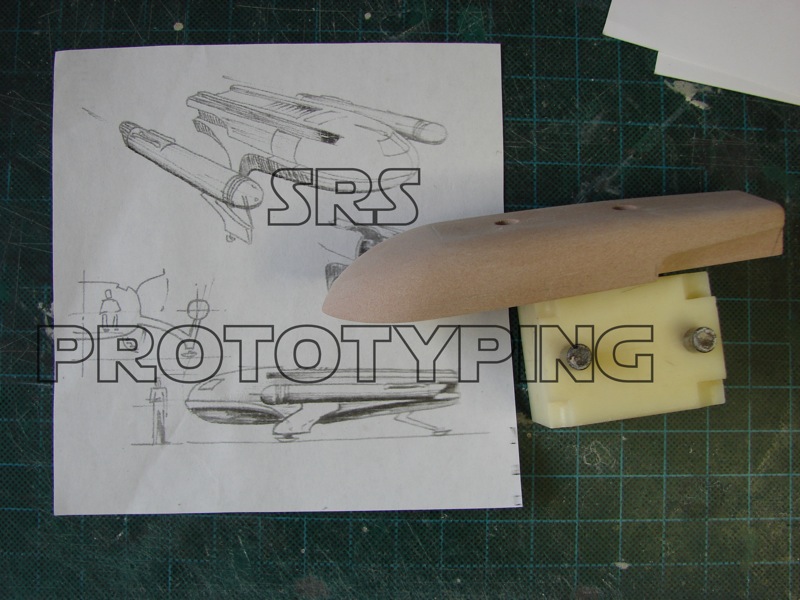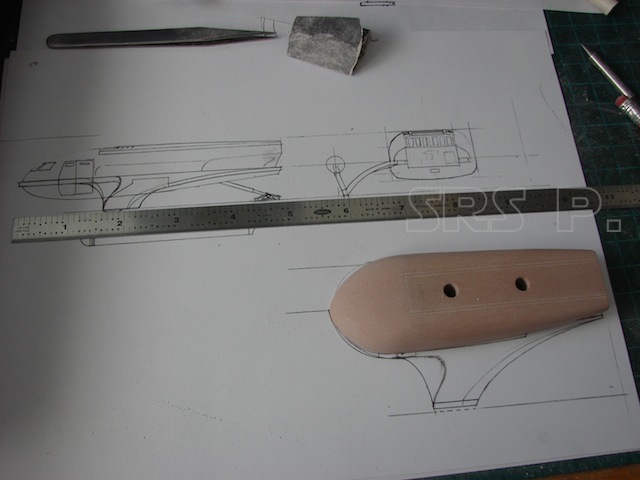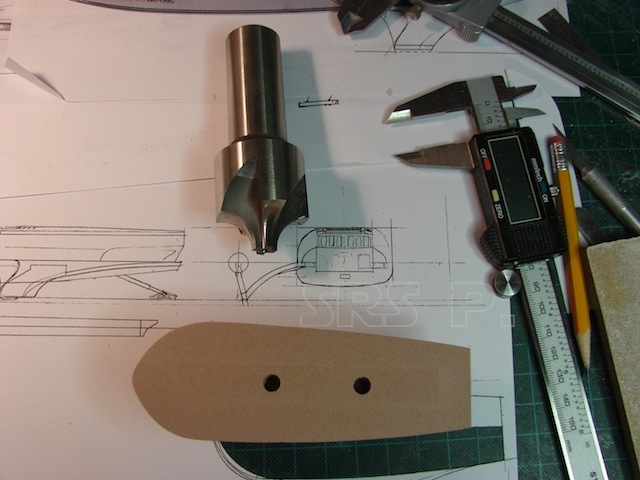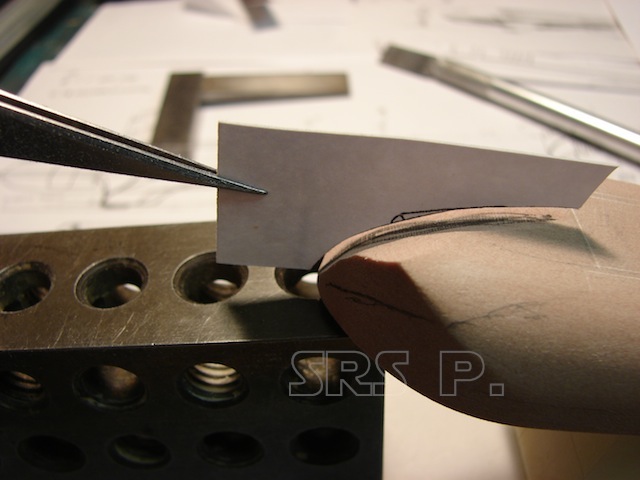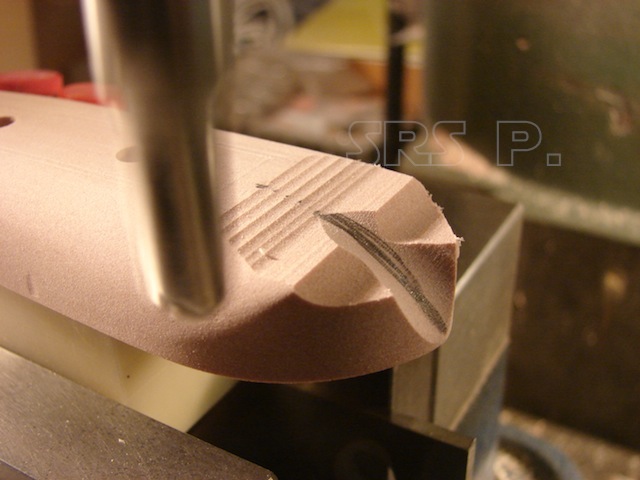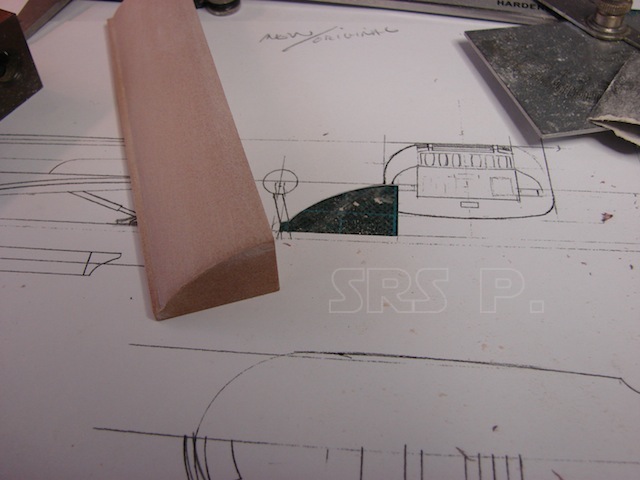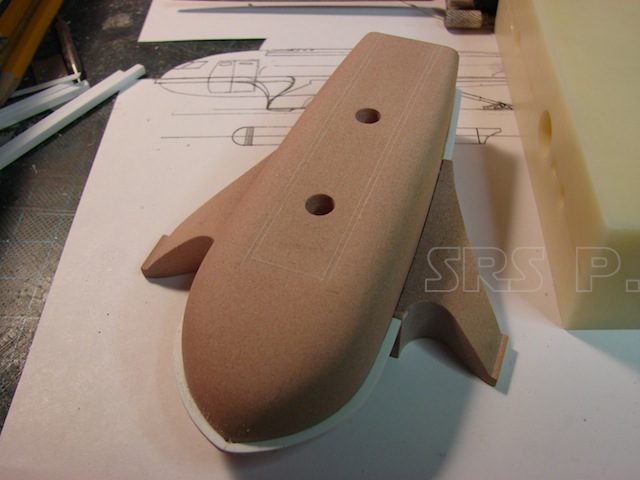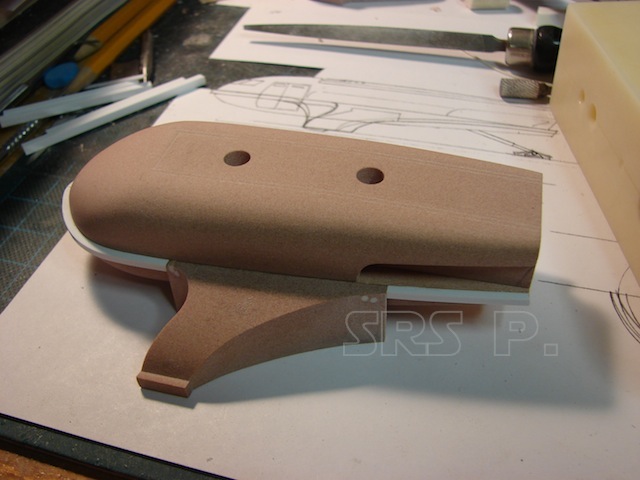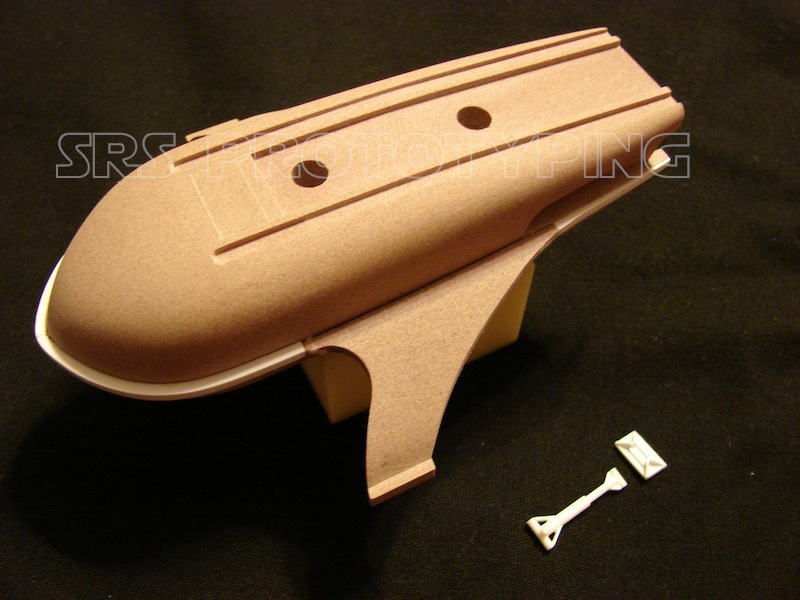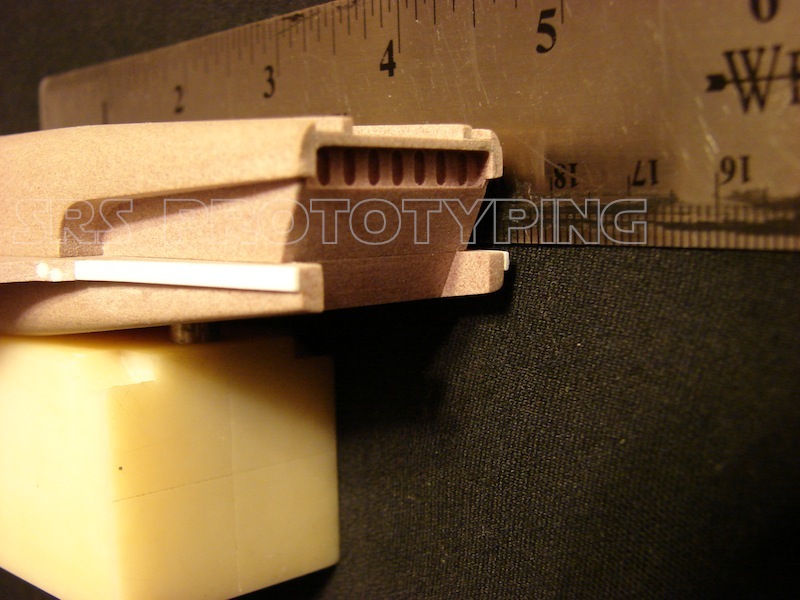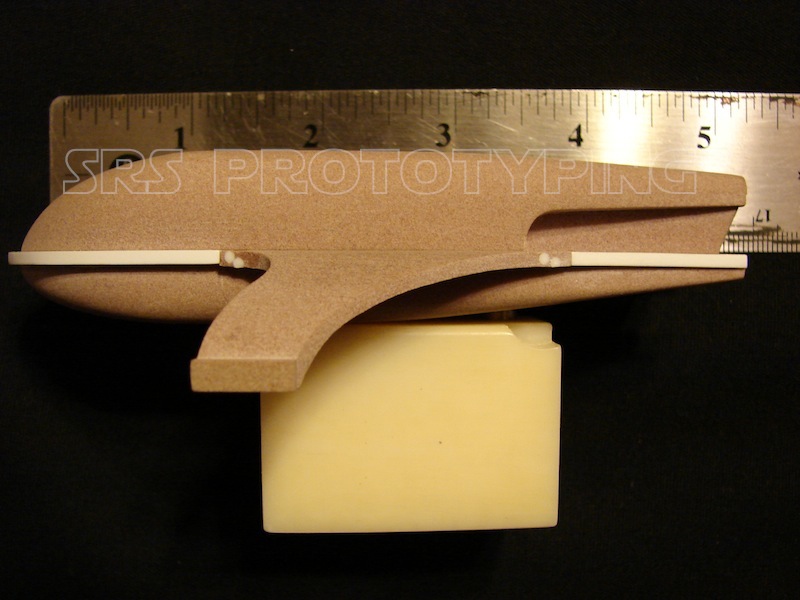This will be a very short page, as the rush to get this master completed caused me to not photo-document the process.
I remember looking through the book and seeing this sketch in a corner of one of the pages, it just jumped out at me. It was fun to extrapolate a rough sketch into a finished design. Of course, I did so very carefully so as not make it ‘my version’ shuttle design. I had viewed several attempts from other artists to render the shuttle and was not totally happy with what I saw. I tried to keep it practical and only use my own ideas where necessary. I also wanted to blend the Galileo shuttle we all know so well into the original Jeffries design. I decided to keep elements of the stern details and, I wanted to give it an interior. So, the live action set was fitted into the kit design. I made the kit so that if it were ever turned not a full size set, it would function better than the Galileo set that every actor had to hunch down into. It is a truly elegant design, never used in the original TV series because it was deemed too expensive to make.
I used the rough proposal sketches that Matt Jeffries had created those many years ago for the original series as my guide. His designs called for economy of space for the interior of all his shuttle concepts. Keeping that in mind, I did my best to adapt the Galileo interior & exterior built for the TV show to the kit. This gave me more room for seats. The front console or dashboard, has minor changes to it to conform to the new design.
I started by creating my own drawings of the shuttle. Pictured below is Matt’s concept sketch and my adaptation as true plan views.
I used a radius-cutting end mill to help with part of the milling profiling.
These next images show more of the contouring process using a ball end mill.
To create the combination lower pylon, landing strut, I machined the carved the outer contour first. Making a long block allowed me to have the left & right pylons made at the same time. Once they were carved and located in place with pins, I removed the excess material until I have a wall thickness final part.
While keeping the upper & lower hulls pinned together on the work block, I could mill the contours of the upper hull and the impulse engines.
Ounce the outer contours were finished, the hulls were separated from the work block and hollowed out by hand to create wall thickness upper & lower hull shells. Then the interior was prepared for the seats and the front console. The rear bulkhead door was then created to look like the set door shown in the set interior. The upper or short pylons were made and the engines and components turned on a lathe.
The TOS seats were created for me by Catalyst Creations . This was the first time used grown parts for anything I have worked on. I was worried that there would be some kind of issues, but my worries were unfounded. The design and creation of the prototype chair went without a hitch!
You can view the kit here.
You can view an assembled and lighted kit by Steve Neill here. ( Scroll down about halfway on the page )

